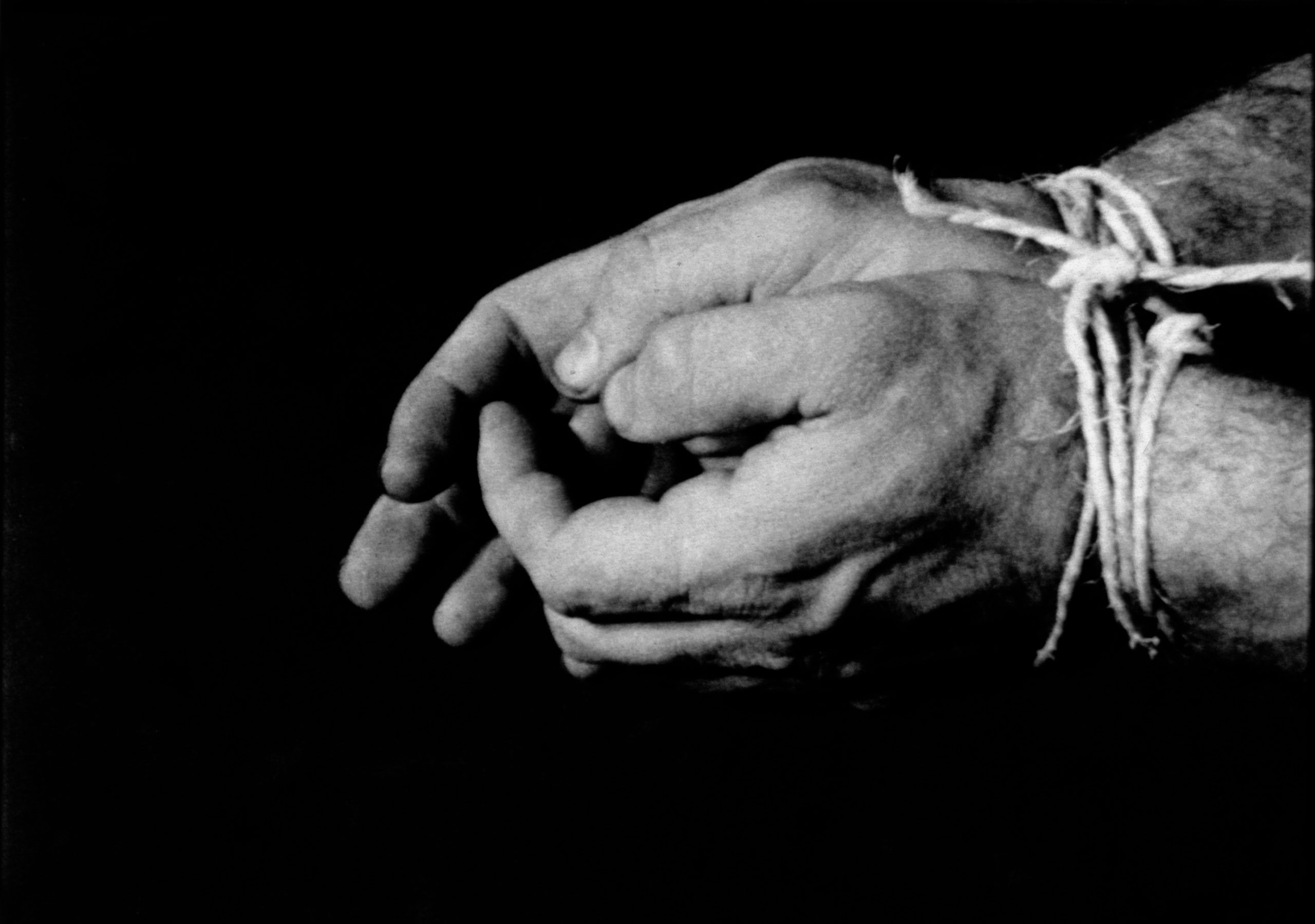Upon his death in March, Richard Serra was understandably most eulogized in reference to his extensive and influential work in sculpture. Less known but no less interesting is the period from the late 1960s through the 1970s when he produced video art. There have been tributes to his cinematic oeuvre—at the Kunstmuseum Basel in 2017, Anthology Film Archives in 2019, Harvard in 2020—but it remains mostly a footnote to his famous feats of curving metal. Which is a shame since his films easily stand alongside those of his contemporaries. Dia Chelsea is providing a new, if abbreviated, opportunity to see most of Serra’s moving image works. Collaborating with Electronic Arts Intermix, the gallery will have fifteen of his films on display in its talk space through September 14 in “Richard Serra: A Film and Video Exhibition.” The exhibition will conclude with a lecture by curator Chrissie Iles.
Serra described his films as “task-oriented,” which is a useful lens through which to view them. It’s readily apparent with his four “hands” films, which have their own dedicated wall in the exhibition. Silent, in black and white, no more than a few minutes long, and all made in 1968, each observes Serra’s hands performing a specific motion. In Hand Catching Lead, he tries to snatch little bits of lead that fall past. In Hands Tied, he works to free his wrists from the twine that binds them. In Hands Scraping, featuring a guest appearance by the hands of Philip Glass, he clears away a pile of lead filings on the floor. In Hand Lead Fulcrum, he holds out a lump of lead, his arm slowly drooping under its weight.

The gestural emphasis recalls the very earliest moving-image works that exist, Eadweard Muybridge’s motion studies, but with a focus on a specific body part rather than the whole human form. Each film’s basic premise and focus on repetitive movements and prolonged effort make them a piece with Serra’s interest in Postminimalism; while superficially simple, those repetitions introduce myriad subtleties, highlighting how many different ways one can approach the task at hand (pardon the pun). There’s also nothing mechanical or loop-like about the films. Serra’s hand noticeably tires over the course of Hand Catching Lead, and the very title of Hand Lead Fulcrum alludes to the gradual arc of motion that his arm makes as it lowers over the duration. Related is 1973’s Surprise Attack, in which Serra tosses a cube of lead from one hand to the other, reciting a snippet from Thomas Schelling’s The Strategy of Conflict to the rhythm of the motion. The text lends the playful motion an energy of tense anticipation.
Hand Lead Fulcrum ends just as Serra’s hand is about to go out of sight, as if the unspoken conceit is that the image only exists as long as he can keep the lead within it. Serra toys with the question of cinematic existence within an image much more expansively in Frame. Cameraman Robert Flore, pointing the camera at a blank wall, directs Serra in using a ruler to measure out the edges of the part of the wall that appears in its view. To their amusement, Serra comes up with an uneven, roughly trapezoidal shape, in defiance of the apparently even rectangle we see onscreen, highlighting how cinema can collapse three-dimensional objects into two dimensions. The film emphasizes this, creating different frames within the frame, first looking at a projection of a blank wall, then discarding blankness entirely to look out a window onto a city street, and then looking at a projection of the window. All along, Serra keeps making measurements.
Dimensionality is also the subject of several other shorts, most prominently 1976’s Railroad Turnbridge, in which the camera is aligned with the vanishing-point lines of a bridge as it completes a rotation. The close attention to the many mechanisms acting together to move the structure creates a study of monumentality that makes this feel of a piece with Serra’s sculptures. This connection is explicit in his final film (co-directed with Clara Weyergraf), 1979’s Steelmill/Stahlwerk, essentially a behind-the-scenes documentary about the steelworkers who forged his 1977 piece Berlin Block (for Charlie Chaplin). Contrasting the workers’ organic forms against the huge cube of white-hot metal they’re shaping, it demonstrates the element of labor that’s often ignored in consideration of artistic production.

Serra similarly asks the viewer to consider form and function in films that explicitly draw attention to both. In 1974’s Boomerang, Nancy Holt speaks while wearing headphones that play her audio back to her at a delay. She narrates the surreal experience to the camera, examining how the electronic echo is affecting her thought process. The viewer experiences their own feedback loop while watching the film, absorbing both the spoken and reiterated words at their own delay. It can be overwhelming.
On the opposite end is the completely stripped-down Television Delivers People (1973), co-directed by Carlotta Schoolman. A treatise on how the format of television reverses the paradigm of media consumption and turns the viewer into the product (“delivering” them to advertisers), the short assumes the format of an emergency alert, consisting solely of text scrolling on a screen. It mimics the aesthetics of television while avoiding the bombast that it decries, demanding close attention rather than treatment as casual background noise. Over the decades, its message has only become more relevant, as an increasing share of art and culture has become subsumed into the passive interaction of screens, delivering ever more people (and their data) to corporations. It’s unusually didactic among Serra’s work, but no less riveting. All his films carry a similar elliptical, hypnotic intrigue, not unlike how one could feel physically ensnared within the corridors of his giant metal sculptures.

